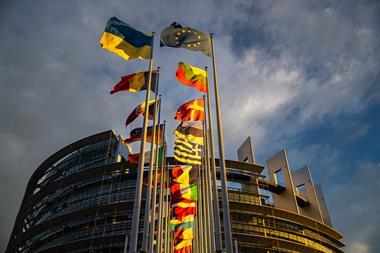An overwhelming majority of the available academic research confirms that the performance of SRI strategies does not differ substantially from that of traditional strategies. They even confirm that if there is a difference, it tends to be small and positive (see article on ”Sustainable indices: risk and return characteristics”, page 19). In this context, the long-term performance of SRI should not be subject to question.
Nevertheless, from the institutional investor’s point of view, greater concern persists with regard to the investment risks in SRI. For instance, many pension funds ask themselves whether an SRI investment policy with a more restricted investment universe is compliant with their fiduciary responsibility of “being a prudent investor”. Moreover, even if pension funds have long-term investment objectives, performance evaluations are carried out regularly. In practice, the risk aversion to short term performance differences as against the benchmark tend to be higher than the risk aversion one would derive from the pension fund’s investment horizon.
Actually, we can demonstrate that it is possible to construct portfolios combining high SRI standards with levels of relative risk tailored to the client’s preferences. By way of example, Dexia Asset Management studied the impact of integration of sustainable criteria in the construction of an equity portfolio managed in relation to traditional reference index, the MSCI EMU. Vigeo assessed each company included in the DJ EuroStoxx relative to five dimensions*: human resources, environment, clients and suppliers, corporate governance, civil society. The grades attributed by Vigeo analysts to each dimension form the starting point for this study: they will be converted by Dexia Asset Management into a rating out of 20 (sum equally weighted).
This rating, called the ‘sustainable rating’, will enable an adjustment to be made to the restrictive character of the socially responsible filter. On this basis, Dexia Asset Management defines new universes of socially responsible investment.
The most rigorous socially responsible universe is composed of companies with a sustainable rating of a minimum 14 out of 20. As seen in Graph 1, this universe only covers the 13% best-rated sustainable companies within the EMU zone. At the other end of the spectrum, the least restrictive portfolio consists of all the companies with a sustainable rating above 6. This universe excludes only the 7% worst performing companies according to sustainable ratings. An intermediate SRI investor opting for a minimum rating of 10, would invest in a little more than 50% of the market.
By analysing these different (cap-weighted) investment universes, it can be observed that these present a significant relative risk in comparison to the market index, and that this risk increases rapidly in relation to the strictness of the filter. The relative risk increases from approximately 1.50% for the least restrictive universe to 5.00% for the strictest sustainability filter.
Using a risk minimisation process, an active asset manager can reduce this relative risk in a very significant way. This necessitates a process for the construction of a replicating portfolio enabling a reduction of the sector and geographic differences as well as those of style factors inherent in the initial investment universe. The replicating portfolio thus obtained will respond to the criteria desired as regards sustainable development whilst posting a minimum relative risk (tracking-error).
As indicated in Graph 1, the relative risk of this portfolio is considerably reduced in relation to that of the original investment universe. Tracking errors will vary between 50 basis points for the less restrictive SRI portfolios and 350 basis points for the most severe (compared to 150 and 500 basis points), completely in line with the risk budgets typically available for active managers.
Moreover, detailed risk factor analysis shows that the residual relative risk will be composed principally of the specific risk associated with the selection of the individual securities. In fact, as observed in Graph 2 (example of a portfolio with a minimum score of 10/20), the construction of the replicating portfolio allows the elimination of systematic biases inherent in the investment universe.
The construction of the portfolio of an institutional client will therefore take place in relation to the balance, defined by the client with the assistance of his manager and, if necessary, his consultant, between the strictness of sustainable criteria and the client’s tolerance of relative risk. If desirable, he can even choose to emphasize specific dimensions of sustainable development, for example, environmental or social issues, depending on the preferences of his trustees.
In this context, the role of a specialist SRI manager like Dexia Asset Management consists of combining a high sustainable quality with first-rate financial risk-return characteristics.
o The sustainable quality is guaranteed by integrating the information from specialist and independent sustainable rating agencies like Vigeo, Ethibel or Dow Jones Sustainability Group
o The return is maximised by using the output of proprietary quantitative stock selection models and the in-depth fundamental analysis of our in-house buy-side team of analysts
o The risk is managed by a quantitative portfolio construction, minimising tracking error, sector differences and style biases
Such an investment process thus enables the institutional investor to achieve a double objective: on the one hand to ensure the good financial management of his funds and on the other hand to incorporate in that management the socially responsible behaviour of the companies selected.
Wim Vermeir is Head of Equity and Sustainable Management and Gaëtan Herinckx is Sustainable Asset Manager, both at Dexia Asset Management
*Since the beginning of 2004, the Vigeo methodology has included a sixth dimension: human rights
www.vigeo.com














No comments yet